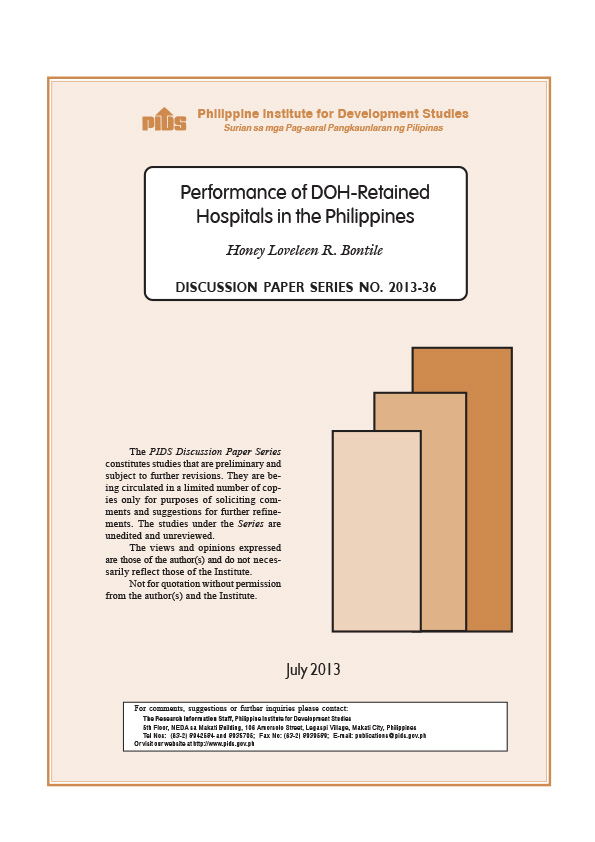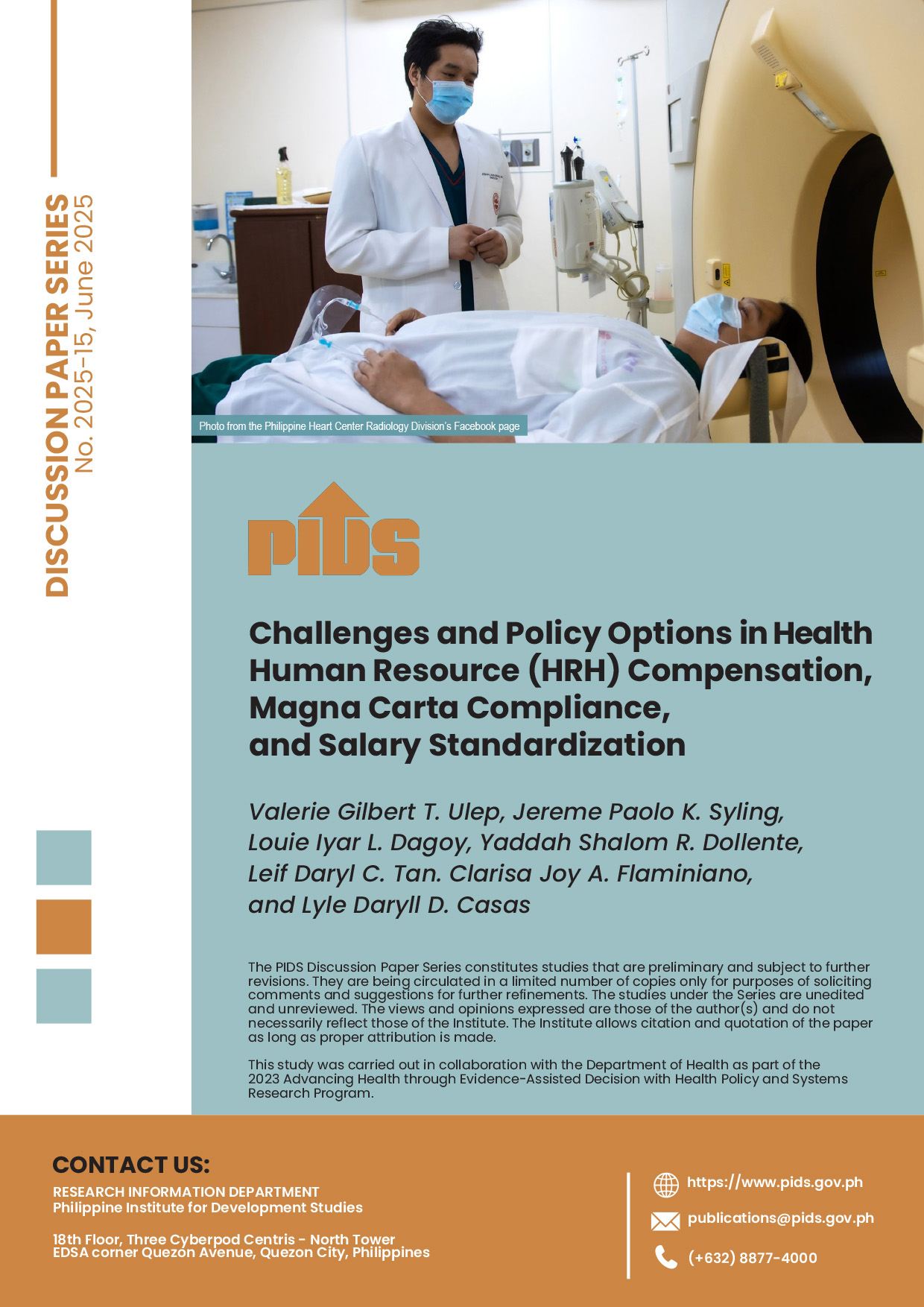The national government has been aiming for the provision of essential health services that are accessible, affordable, and equitable. With the LGU Code of 1991, DOH retained 45 hospitals nationwide and in 2011, with the exclusion of drug abuse treatment and rehabilitation centers, 21 renationalized and 4 new hospitals were added to the list: 51 hospitals were classified as general and 19 are specialty hospitals. Aside from accessibility, people seek quality health care when getting medical attention while health providers use quality care to increase their market share. However, perception of quality differs between patients and health providers.
Since one of the functions of the NCHFD is to provide technical assistance, an assessment of the 2011 hospital performance during the first year implementation of the KP thrust is beneficial. The study may determine areas for improving levels of performance and provide evidence for policy development. Results can serve as basis in ranking DOH hospitals in the PBB implementation. Furthermore, application of hospital performance specific indicators can be used in the planned hospital scorecard.
The study focused its analysis on the 51 general DOH hospitals. Data were based on the annual hospital statistics reports submitted to the BHFS and NCHFD. Indirect indicators were used as recommended and agreed upon by the hospital information management team since the direct measures of quality care cannot be used. Generated results were compared to the standards proposed by McGibony (1969) and used as reference by the DOH (A.O. 147 s.2004).
Citations
This publication has been cited 1 time
- Picazo, Oscar F. et.al. 2015. A critical analysis of purchasing of health services in the Philippines: A case study of Philhealth. Discussion Paper 2015-54. Philippine Institute for Development Studies.













